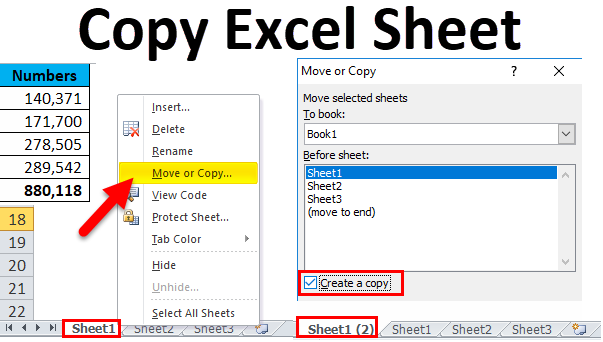5 Ways to Copy Formulas Between Excel Sheets Easily

The task of copying formulas between Excel sheets can often be daunting for many users. However, with the right techniques, this process can become remarkably straightforward, saving you time and reducing errors. Here, we'll explore five efficient methods to copy formulas between sheets in Microsoft Excel.
Using Copy and Paste

Perhaps the most straightforward method, copy and paste, is universally known:
- Select the cell with the formula you wish to copy.
- Press Ctrl + C or right-click and choose "Copy".
- Navigate to the target sheet, select the destination cell.
- Press Ctrl + V or right-click and choose "Paste".

Using Paste Special

For scenarios where you need more control over what gets copied, paste special offers additional options:
- Follow the steps to copy as described above.
- On the destination sheet, right-click and choose "Paste Special".
- Select from options like:
- Formulas (to only paste formulas without formatting)
- Values (to convert formulas to static values)
- Choose your preferred option and click "OK".

Named Ranges

Using named ranges can streamline the copying of formulas:
- Define a named range for the cells that contain the formulas you want to copy. You can do this by selecting the cells, going to the "Formulas" tab, and choosing "Define Name".
- When copying formulas, simply reference the named range instead of absolute cell references. This way, your formulas will automatically adapt to the new sheet.
- This method is particularly useful when dealing with complex workbooks.

Drag and Fill

If you need to copy formulas across similar structures:
- Write your formula in the first cell of the new sheet.
- Hover over the bottom right corner of the cell until you see a small cross.
- Click and drag to fill the formula into the adjacent cells or sheets.
Note: This method assumes that the formula references relative cell locations which will automatically adjust when dragged.
⚠️ Note: Ensure that your source and destination cells have the same structure to avoid formula errors.
Using Excel’s Data Consolidation Feature

For more complex scenarios involving multiple sheets:
- Go to the "Data" tab and select "Consolidate".
- Choose your function (e.g., Sum, Average).
- Add the source sheets and ranges you want to consolidate.
- Check the box to create links to the source data if you want the consolidated data to update automatically.

The five methods outlined above each have their own merits, and the choice depends on the specifics of your task:
- Copy and Paste is simple and universal.
- Paste Special gives control over what you copy.
- Named Ranges facilitate easy formula management in large workbooks.
- Drag and Fill is perfect for repetitive tasks.
- Data Consolidation is great for summarizing data from multiple sheets.
Understanding these techniques not only helps in efficiently managing data but also ensures that your work in Excel remains accurate, consistent, and less error-prone. Regular practice with these methods will significantly enhance your productivity and streamline your data handling capabilities in Excel.
👁️ Note: Keep Excel formulas updated by ensuring cell references are correct after copying.
How do I know if my formula references are correct after copying?

+
Check the formula bar after pasting the formula. If you see ‘#REF!’ errors, it indicates that the references are invalid. Adjust the formula references manually or review the structure of your source and destination sheets.
Can I copy formulas without copying the formatting?

+
Yes, you can use “Paste Special” and select “Formulas” to only copy the formula without the cell’s formatting.
What should I do if my named range formula doesn’t work on the new sheet?

+
Ensure that the named range exists on the destination sheet or workbook. If it doesn’t, either redefine the named range on the new sheet or update your formula to reference the original named range from the source sheet.
How can I make Excel formulas more portable?

+
Use relative cell references where possible. If you must use absolute references, consider using named ranges to make your formulas more adaptable when copied.